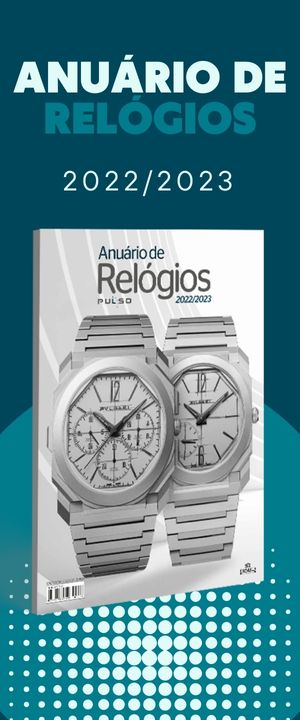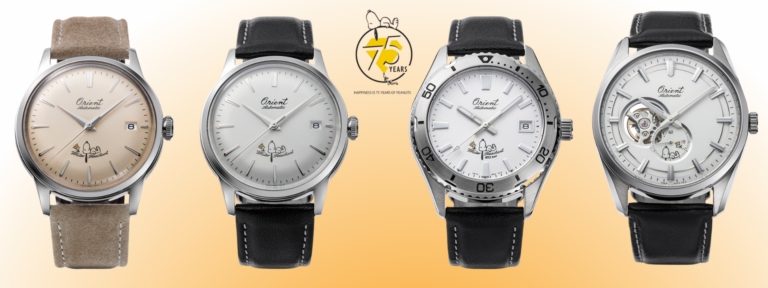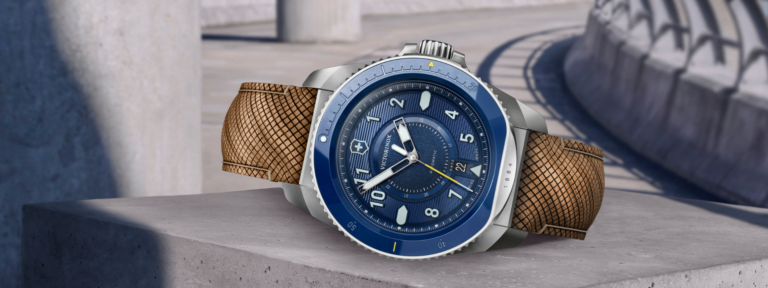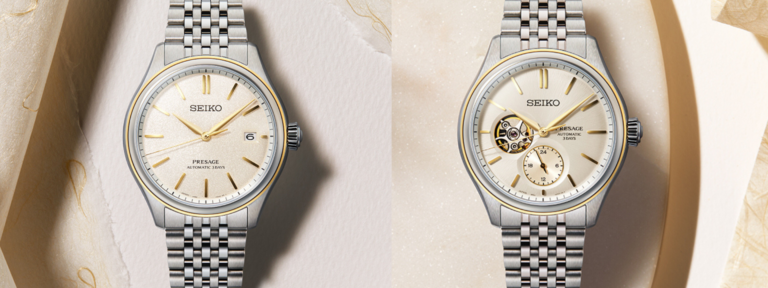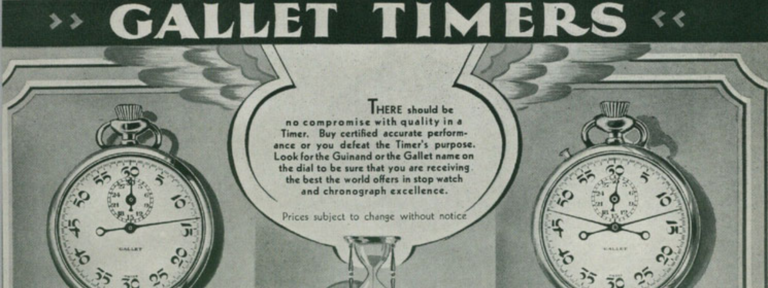Fonte: Release da marca
MB&F x EDDY JAQUET
LM SPLIT ESCAPEMENT – 8 PIÈCES UNIQUES
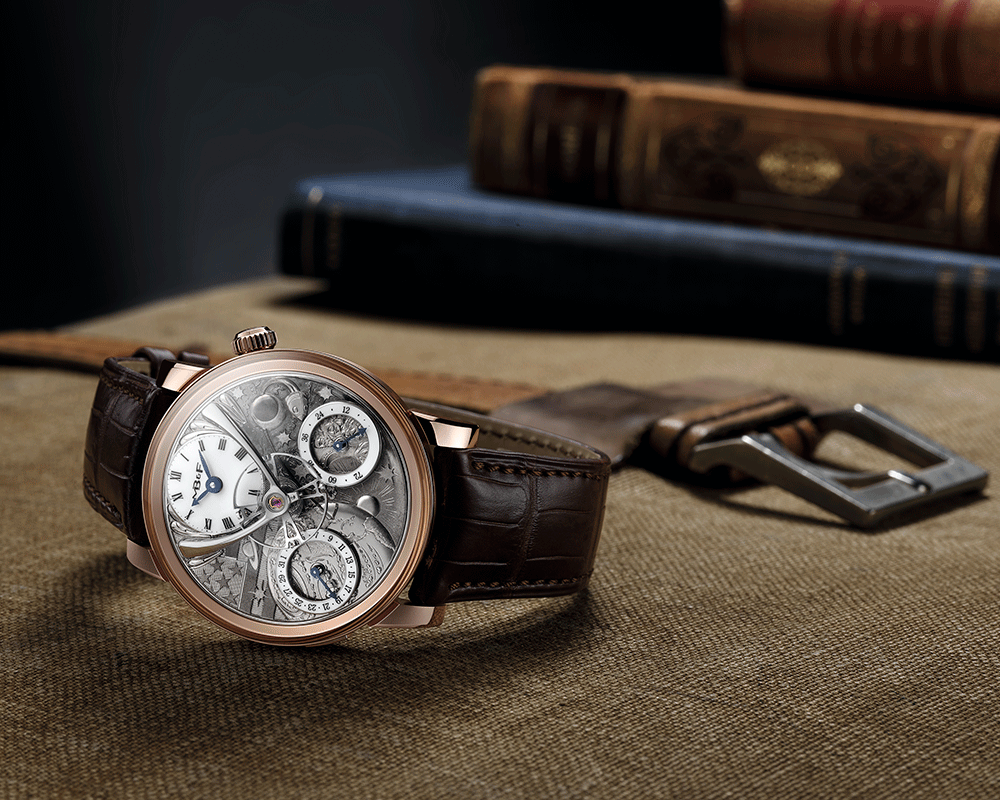
In the course of its 15-year history, MB&F has partnered with some of the most talented watchmakers of our generation — Kari Voutilainen, Eric Coudray, Stephen McDonnell, Jean-Marc Wiederrecht and Stepan Sarpaneva, to name a handful. Designers and artists as well, from long-time collaborator Eric Giroud and the iconoclastic Alain Silberstein to sculptor Xia Hang and contemporary painter Sage Vaughn. Now, for the first time, MB&F is putting the work of a traditional artisan in the spotlight, with the LM Split Escapement ‘Eddy Jaquet’ Limited Edition: a series of eight unique pieces featuring the extraordinary imagination and skill of the well-known engraver in depicting the novels of Jules Verne.
Eddy Jaquet is recognised throughout the rarefied circles of independent watchmaking aficionados as the man whose transformative touch can turn a watch into a rich storytelling tapestry. Those who have followed MB&F for a long time will already be familiar with his work. The flowing script you see on the Legacy Machine engines is made in Eddy Jaquet’s hand; it is the merest hint of his true artistic talent. MB&F founder Maximilian Büsser says, “We’ve worked with Eddy for years, but getting Eddy Jaquet to engrave names on movements is like playing Für Elise on a Stradivarius violin — you couldn’t imagine a more modest use of such an amazing gift.”
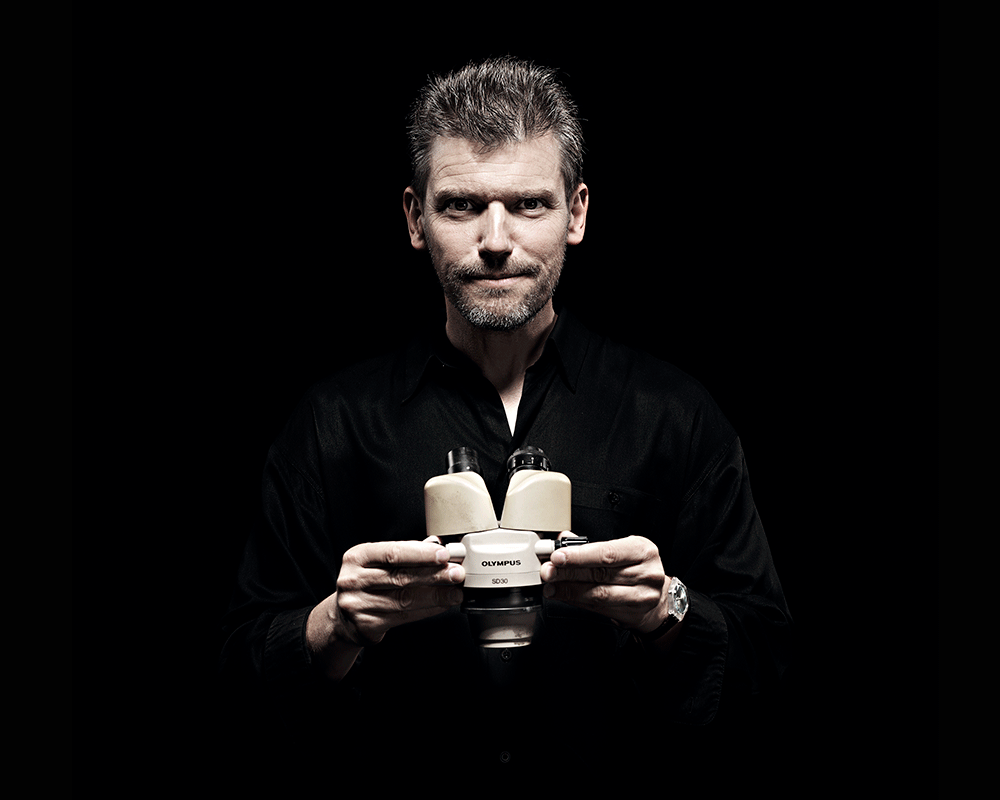
The most memorable work of the Neuchatel-based Jaquet is characterised by the depth of its scope and ambition; it is classical in style and heroic in its execution of human figures. In a way, the uniting theme of the LM Split Escapement Eddy Jaquet Limited Edition was inevitable. Says Büsser, “We’re brainstorming around the table, and a theme that comes immediately to mind is the writing of Jules Verne, because I’m so into science fiction, and because the Legacy Machine collection that Eddy has been working on is basically the watch that I would have created if MB&F was founded 150 years ago.”
Because of its wide expanse of surface available for engraving, the Legacy Machine Split Escapement (LM SE) was a natural choice for this unprecedented collaboration. In his preliminary research for the series, Eddy Jaquet devoured the books of Jules Verne, reading up to 60 novels and short stories by the prolific 19th-century French author. The eight stories that were finally selected to be illustrated in the limited edition include some of his best-loved work such as Twenty Thousand Leagues Under The Sea but also some of the lesser-known stories such as The Adventures Of Captain Hatteras.
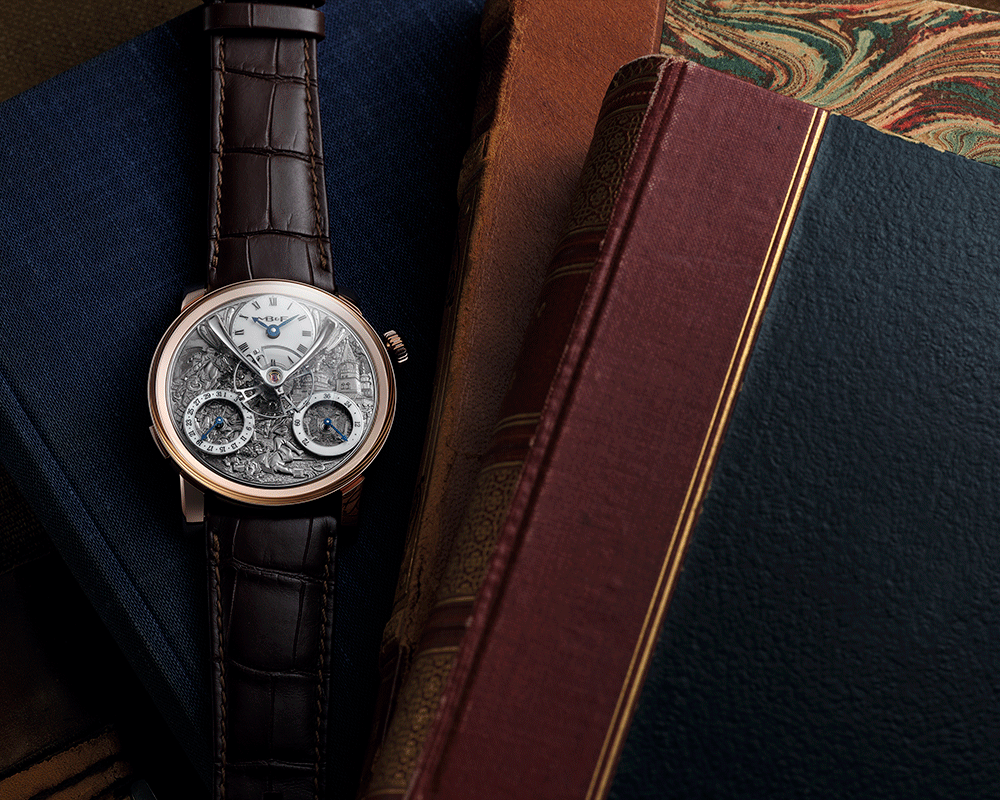
Highly notable is the fact that none of these illustrations are drawn from an existing piece of art. They are conceived by Jaquet after reading the source books by Jules Verne and viewing any other secondary films or creative work based on the books. Each engraving is an intricate tableau of scenes and key moments from the stories, synthesised in the imagination of Jaquet and expressly designed to be interpreted through the medium of the LM SE engine.
Not only did Jaquet have to exercise his creativity and engraving skill to the utmost, he was also obliged to practise his craft within the exigencies and limitations set by the LM SE engine. The designated engraving space was the dial plate, which presents a flat upper surface in the main LM SE series, but is actually of variable thickness on its reverse side in order to accommodate the different components of the engine. Engraving the dial plate as if it was uniformly thick throughout was not possible — careful consideration had to be made as to where the thinner areas were, so as not to inadvertently puncture the artistic canvas if a particular section required deep-relief engraving. From the side of production as well, several adjustments were made to the original LM Split Escapement so as to maximise the available engraving space and allow Jaquet to exhibit his
savoir-faire to the fullest. New, openworked date and power-reserve subdials were created, along with wider dial plates. The bezel was redesigned to be slimmer, and the case dimensions reworked, in order to make space for the wider dial plate. Because the bezel and case dimensions were changed, a new dial crystal had to be produced, with a less pronounced curve to the dome, since its diameter was now increased.
To fully bring out each illustrated scene, Jaquet applied a dark rhodium alloy by hand, adjusting the shading of each detail according to the exigencies of the scene. The smoke of the fire on the Michel Strogoff dial, for example, required an attenuated touch, while the underground sea depicted on the Journey To The Centre Of The Earth dial incorporated gradient-shading techniques. Between the redesign of a number of components and the actual execution of the engraved dial itself, over 300 hours of additional labour were required for each unique piece of the LM SE Eddy Jaquet Limited Edition.
The eight Jules Verne stories illustrated in the series are:
Twenty Thousand Leagues Under The Sea
From The Earth To The Moon
Around The World In Eighty Days
Five Weeks In A Balloon
The Adventures Of Captain Hatteras
Journey To The Centre Of The Earth
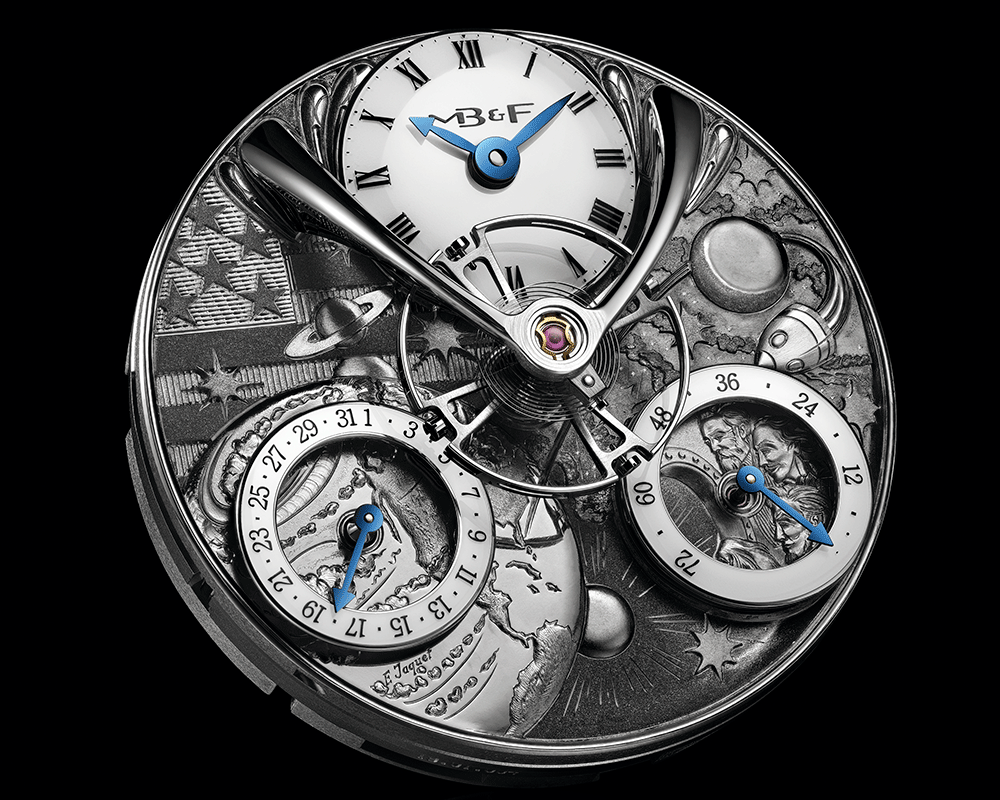
Michael Strogoff
Robur The Conqueror
Each of the eight unique pieces comes in an 18K red-gold case.
ABOUT THE ENGRAVINGS
The engraved dial plates of the LM SE Eddy Jaquet Limited Edition are inspired by the stories of Jules Verne, the 19th-century French writer widely acknowledged to be the foremost pioneer of science fiction. For each unique piece, famed engraver Eddy Jaquet read (or re-read, in some cases) the original work by Jules Verne and viewed any significant secondary creative works based on the books, such as the original published illustrations (which would have been approved by Jules Verne) or films. He then created his own original sketches on templates of the dial plate, depicting key scenes from each story, sometimes combining several tableaux in a single dial plate as a graphic tapestry of storytelling.
The dial plate of the piece inspired by the book Twenty Thousand Leagues Under The Sea, for example, shows the submarine Nautilus drifting in the depths of the ocean in an unspecified location; a pair of ruined pillars just above the power-reserve dial hints that this is the scene where Captain Nemo and his crew explore the lost city of Atlantis. The dial plate of the piece inspired by Journey To The Centre Of The Earth, by contrast, brings together scenes of the protagonists descending into the planet’s interior, the subterranean ocean teeming with prehistoric life, and, far off in the distance — spoiler alert! — the erupting volcano that returns them to the surface in the novel’s denouement.
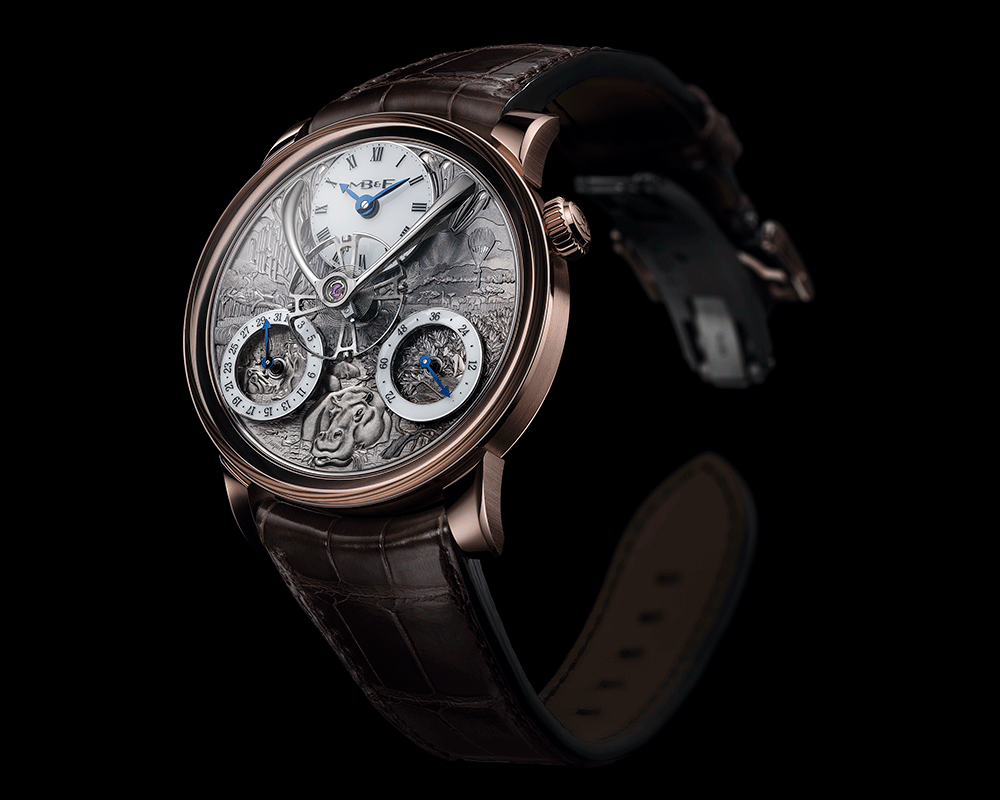
Creating these rich scenes on the limited diameter of the dial plates posed its own particular challenges, some of which Jaquet was able to foresee and plan around, and some that he was obliged to invent solutions for, mid-engraving. While working on the first dial plate to be engraved, the piece inspired by Five Weeks In A Balloon, his detailed project notes include observations about the variable thickness of the dial plate. Although flat on the upper side, the dial plate was highly irregular on its reverse, hollowed out in different places to accommodate the different components of the LM Split Escapement engine.
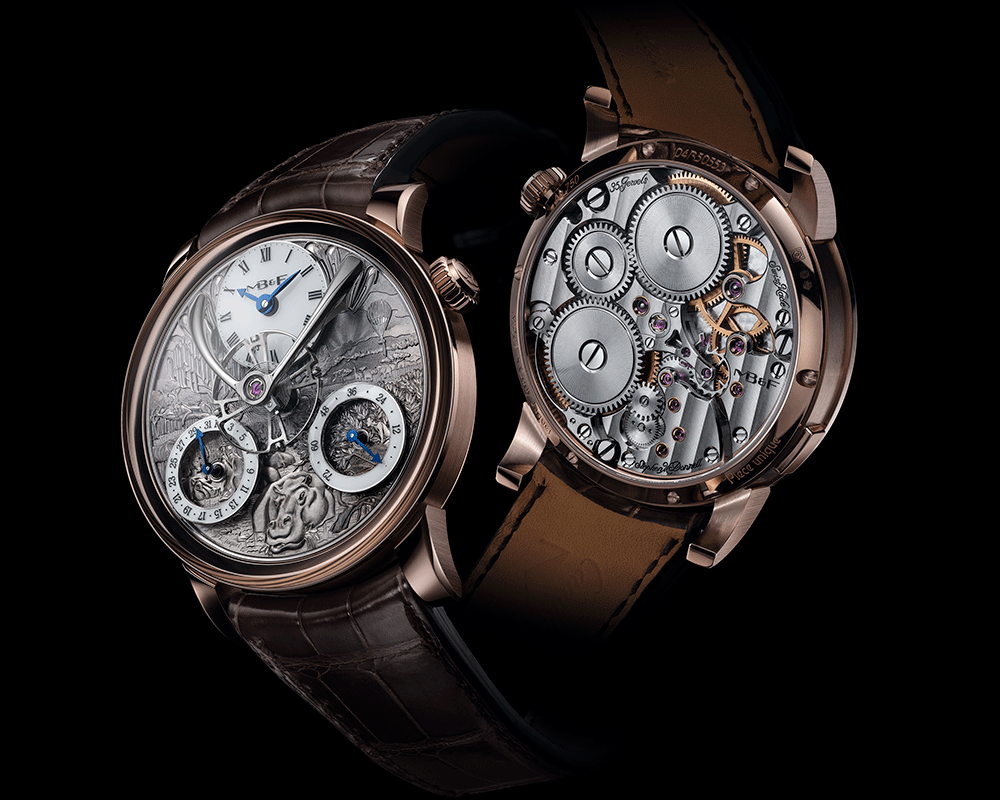
In certain parts, the dial plate had a thickness of 1.15mm, which allowed Jaquet ample space to engrave even in deep relief. In three particularly vulnerable areas, the dial plate measured only 0.35mm thick, requiring him to work with an extremely light touch in those places while making sure that the overall aesthetic of the engraving, which is intricately detailed, was not compromised.
In the same project notes on this particular dial plate, Jaquet refers to the trio of zebras visible at the date dial, quietly refreshing themselves at a watering hole on the African savannah. These animals were not part of his initial concept sketch, but were added late in the engraving process for a key point of aesthetic balance. This, however, required Jaquet to adjust the placement of two nearby hippopotami, highlighting the agility and adaptive skills essential to this delicate project.
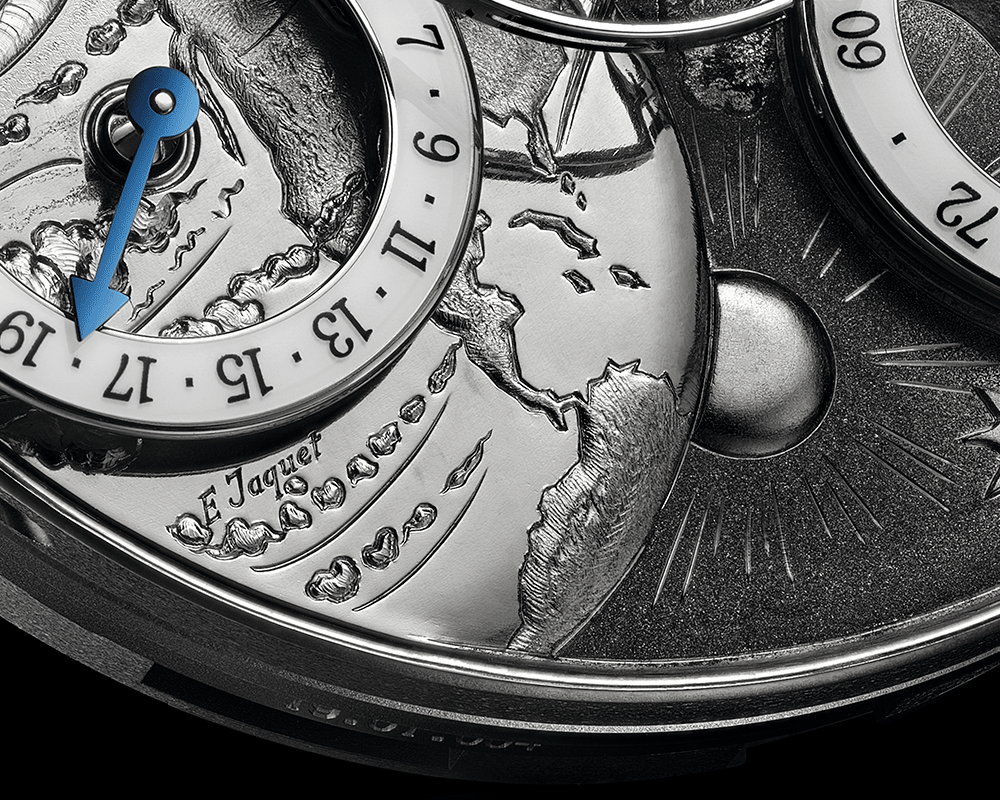
Jaquet frequently uses darkening treatments as a means to draw the eye to certain elements in his dials and to enhance the dramatic rendering of a scene. Instead of the more commonly seen technique of uniformly applying a dark coating, which is then removed in parts to create the necessary contrast, Jaquet opted for a far more labour-intensive (and ultimately more aesthetically impactful) method for Legacy Machine Split Escapement. Using a jeweller’s electroplating pen, Jaquet painstakingly applied a solution containing ions of a dark rhodium alloy to each dial plate. In this technique, the normally silver-white rhodium is alloyed with a secret mix of other metals to impart a lustrous dark-grey coating. Using the electroplating pen like an artist’s brush, layering the solution in multiple applications and working with the natural tendency of the rhodium electroplating solution to draw itself along the grooves and surfaces of the dial, Jaquet was able to create a wide range of grey tones to suggest different textures and levels of light. This mastery of chiaroscuro technique is demonstrated in the smoky fire depicted on the Michel Strogoff dial — ink-dark in some areas and pierced by light in others, billowing around a church steeple as Jules Verne described in his tale. The sleek dark sheen of hippopotamus skin in the Five Weeks In A Balloon dial is brought out
with subtle highlights using a more painterly approach, while the gradient shading of space and sea in From The Earth To The Moon and Journey To The Centre Of The Earth called for rigorous technique, intense focus and complex layering of the rhodium solution to obtain a moiré effect in some parts.
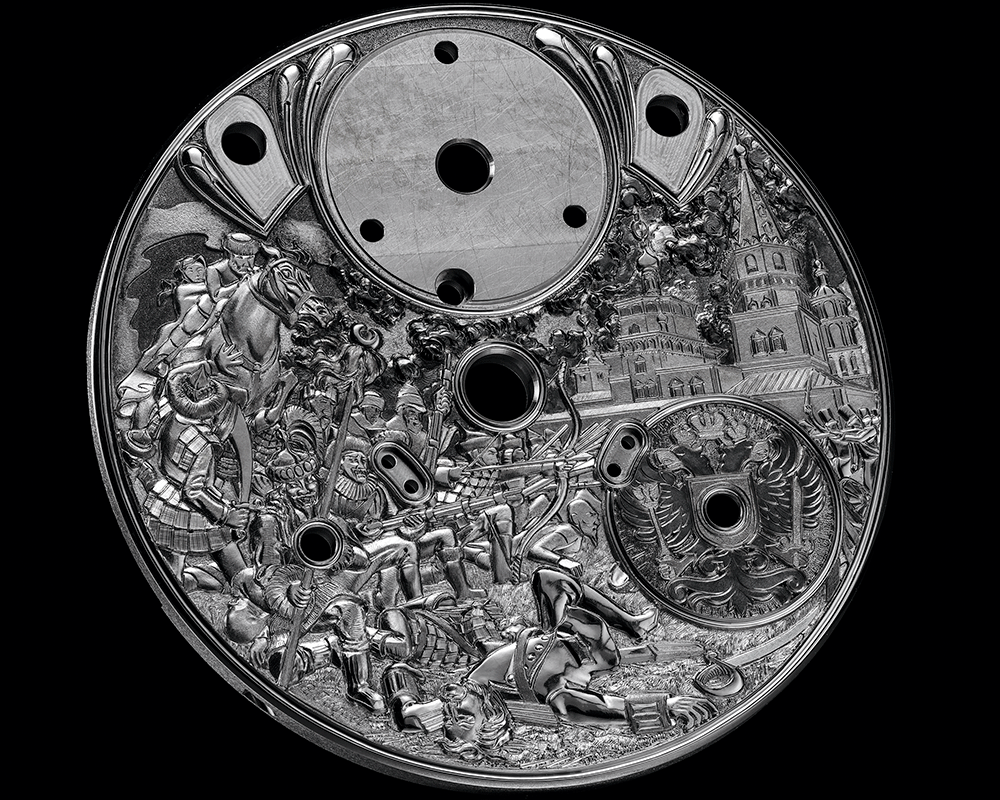
ABOUT THE LEGACY MACHINE SPLIT ESCAPEMENT ENGINE
Apart from the large area of space available for engraving on the dial plate, the Legacy Machine Split Escapement is also a singularly appropriate choice for this project with Eddy Jaquet, one of the most talented artisans in contemporary watchmaking. Featuring the proprietary escapement developed for MB&F by master watchmaker Stephen McDonnell and first introduced in the Legacy Machine Perpetual, the LM Split Escapement is the perfect MB&F creation to bear the engravings inspired by Jules Verne — whose stories are nothing if not sheer escapist delight. Furthermore, the Legacy Machine collection was initially the result of an audacious thought experiment by MB&F founder Maximilian Büsser: what watch would he have created if he had been born in 1867 instead of 1967? The Jules Verne connection brings the story full circle.
The heart of every MB&F machine is twofold. There is a metaphorical aspect, which is its story and inspiration; and there is a literal aspect, which is a mechanical oscillator. These two aspects work together in perfect synchronicity in Legacy Machine Split Escapement to reveal its essential purpose.
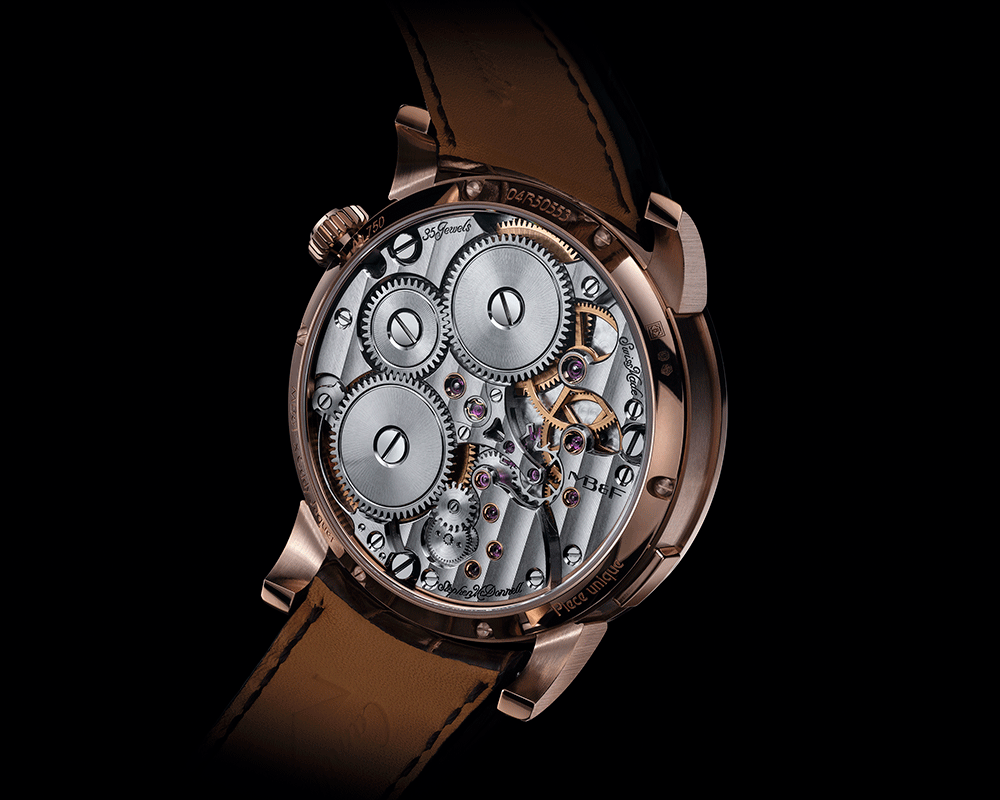
The first Legacy Machine drew on the atmosphere of wonder and optimism that characterised the World’s Fair expositions of the late 19th and early 20th centuries. The eponymous mechanism in the LM Split Escapement channels this heady mix of emotions, an effect achieved by its sharp departure from established watchmaking tradition. By transporting the impulse jewel, anchor and escape wheel to the opposite end of the engine, LM Split Escapement magnifies the impact of its enigmatic balance, akin to an illusionist meticulously hiding all traces of the mechanisms that drive his latest show-stopping opus.
The sensitivity of the balance and the paramount role that it plays in chronometric precision are usually reason enough for watchmakers to avoid straying too far from convention when it comes to escapements. Pure mechanical theory dictates that the point of impulse should be as close as possible to the oscillator, which explains why balance assemblies look very much as they do now — compact components of limited height, with the impulse jewel positioned right beneath the balance wheel and hairspring.

However, the distance between the balance wheel and the impulse jewel is a full 11.78mm, the length of the arbour that traverses the movement and projects through the dial to support the oscillator. A longer arbour increases the likelihood of disrupting influences on the oscillator, as well as the potential distorting effects of a long axle under continuous torsion. The inertia of the balance and the rigidity of the arbour are key factors in this delicate equation, and the LM SE engine is precisely engineered to ensure its chronometric integrity.
Despite the technical challenges of creating the split escapement, the LM SE engine is still designed with aesthetics and classicism in mind — beautifully symmetrical, with bridges that frame their underlying components and curve smoothly around gold chatons and countersunk jewels. And just like in any perfectly executed action, none of the effort is visible to the audience. Only grace and simplicity can be seen. In their quest to channel the breathtaking inventiveness, creative coherence and audacity of Jules Verne, MB&F and Eddy Jaquet could have chosen no other piece than the Legacy Machine Split Escapement.
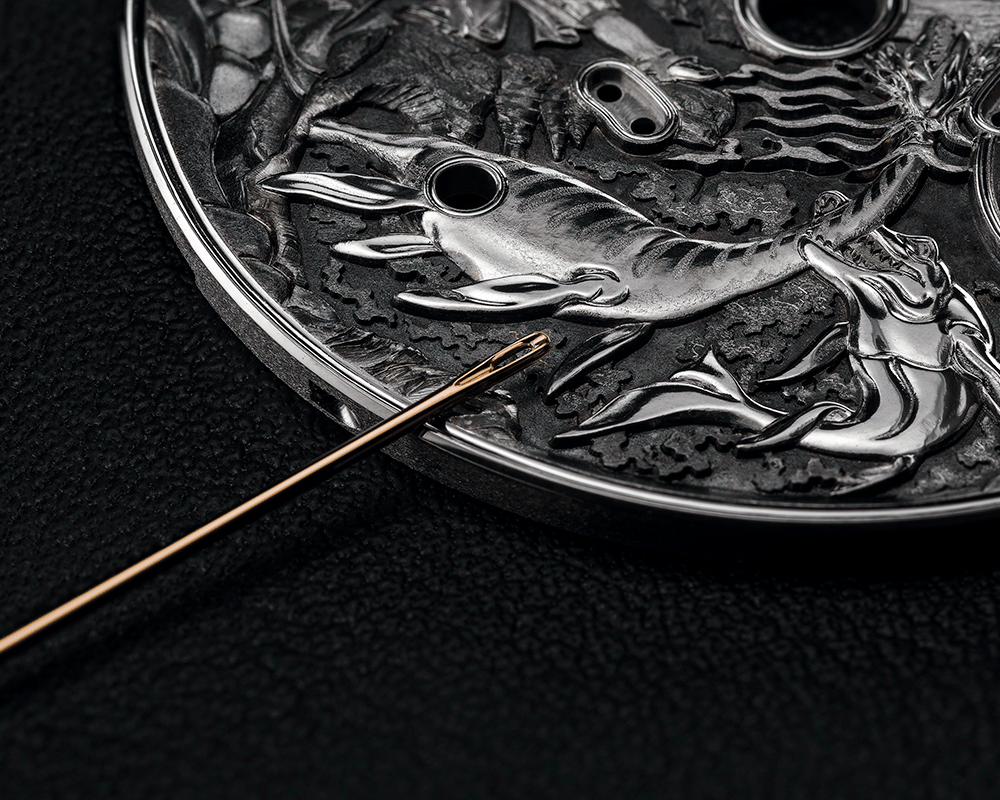
ABOUT EDDY JAQUET
Watchmaking has its fair share of rock stars, names that immediately evoke admiration and respect when associated with a timepiece. The small tribe of international watchmaking aficionados has long been familiar with the work of movement makers such as Jean-François Mojon, Kari Voutilainen, Jean-Marc Wiederrecht, Stepan Sarpaneva, Eric Coudray and Stephen McDonnell. Designers such as Eric Giroud and Alain Silberstein inspire cult-like devotion in their most dedicated followers. But only a tiny handful of connoisseurs would know the name Eddy Jaquet, one of the most gifted artists of his generation and the best storyteller working through the medium of dial engraving.
Eddy Jaquet was born in 1965, in a small village on the outskirts of Neuchâtel. Having learned his trade at the École d’Arts Appliqués in La Chaux-de-Fonds, Jaquet went straight on to pursue his lifelong vocation of engraver after graduation, in a career that has continued uninterrupted from 1987 to this day. Since 1994 he has enjoyed complete professional independence, which has allowed him to create some of the most exquisite works of art ever to grace a watch dial.
His work is often based on existing stories and cultural narratives, but nevertheless possesses a rich vein of mythopoeia. This is amply demonstrated by the Legacy Machine Split Escapement Eddy Jaquet Limited Edition, a series of eight unique hand-engraved pieces based on the novels of Jules Verne, which are interpreted anew through Jaquet’s imagination. Eddy Jaquet has been a Friend of MB&F since 2011, when the first Legacy Machine featured his skills in the names of Kari Voutilainen and Jean-François Mojon engraved on a movement bridge.
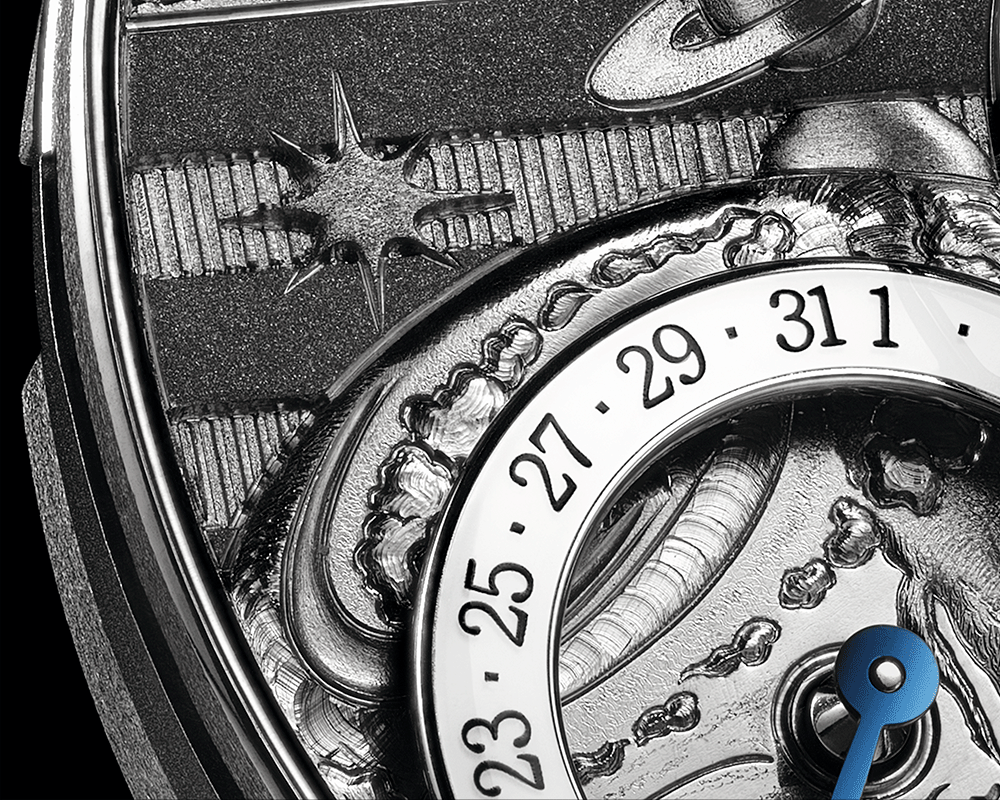
LM SPLIT ESCAPEMENT – MB&F x EDDY JAQUET
TECHNICAL SPECIFICATIONS
Limited edition of 8 unique pieces, with dial plates engraved by Eddy Jaquet, inspired by 8 novels written by Jules Verne:
- Twenty Thousand Leagues Under the Sea
- From the Earth to the Moon
- Around the World in Eighty Days
- Five Weeks in a Balloon
- The Adventures of Captain Hatteras
- Journey to the Center of the Earth
- Michael Strogoff
- Robur the Conqueror
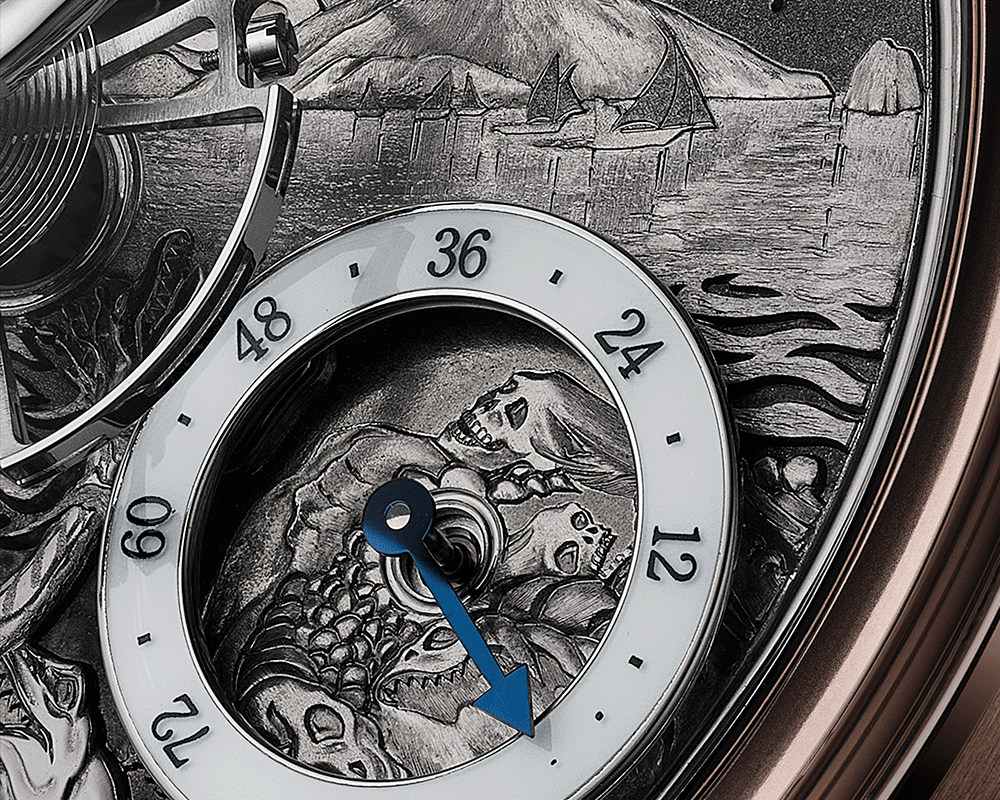
Engine
LM SE movement developed for MB&F by Stephen McDonnell.
Split escapement with the balance wheel suspended above the dial and the anchor and escapement wheel under the movement.
Manual winding with double mainspring barrels.
Power reserve: 72 hours
Bespoke 14mm balance wheel with traditional regulating screws visible on top of the movement.
Superlative hand finishing throughout respecting 19th-century style; bevelled internal angles highlighting hand craft; polished bevels; Geneva waves; hand-made engravings.
Balance frequency: 2.5Hz / 18,000bph
Number of components: 296
Number of jewels: 35
Functions & indications
Hours, minutes, date and power-reserve indicators.
Push-button next to the date dial for quick adjustment of the date.
Case
Material: 5N+ red gold
Dimensions: 44.5 mm x 18.2 mm
Number of components: 50
Water resistance: 30m / 100ft / 3ATM
Sapphire crystals
Sapphire crystals on top and display back treated with anti-reflective coating on both faces.
Strap & buckle
Dark brown hand-stitched alligator strap with 5N+ red gold folding buckle matching the case.
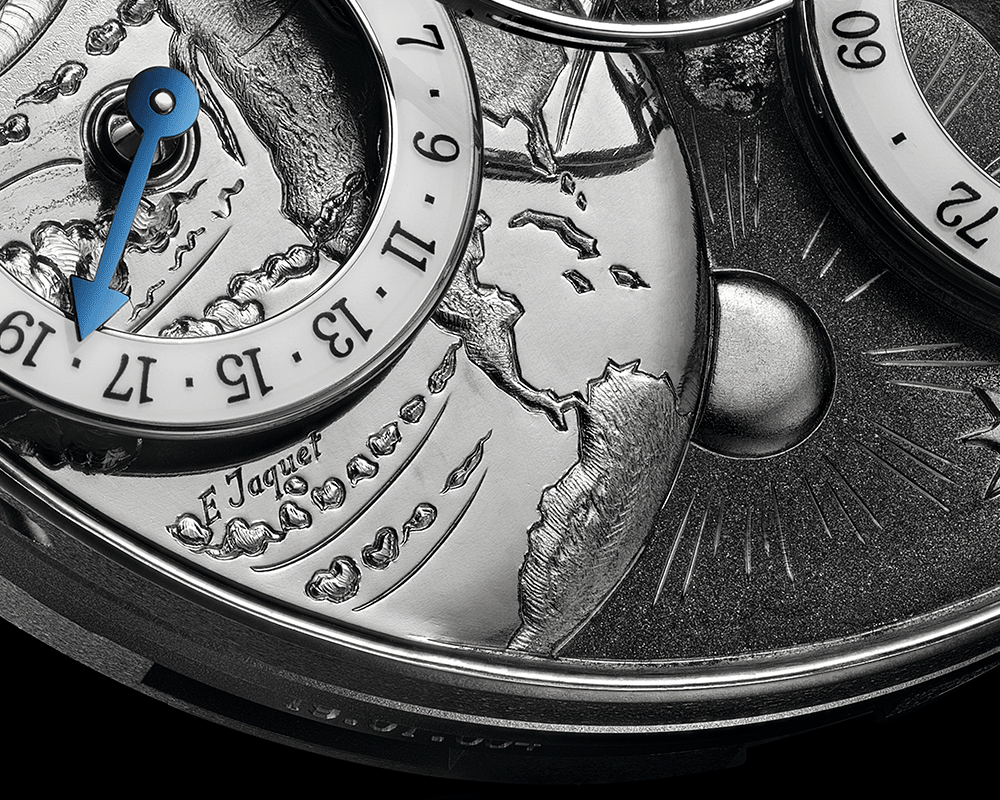
‘FRIENDS’ RESPONSIBLE FOR LM SE – MB&F x EDDY JAQUET
Concept: Maximilian Büsser / MB&F
Product design: Eric Giroud / Through the Looking Glass
Technical and production management: Serge Kriknoff / MB&F
Hand engraving of the 8 unique dial plates: Eddy Jaquet
Movement design and finish specifications: Stephen McDonnell
Movement development: Stephen McDonnell and MB&F
R&D: Simon Brette and Thomas Lorenzato / MB&F
Wheels, pinions and axis: Jean-François Mojon / Chronode, Atokalpa, Daniel Gumy / Decobar Swiss, Paul-André Tendon / Bandi, Swiss Manufacturing and Le Temps Retrouvé.
Balance wheel bridge and plates: Benjamin Signoud / Amecap
Balance wheel: Andreas Kurt / Precision Engineering and Marc Bolis / 2B8
Barrel spring: Stefan Schwab / Schwab-Feller
Case: Alain Lemarchand and Jean-Baptiste Prétot / MB&F
Fine-finishing of the case: Bripoli
Movement components: Alain Pellet / Elefil
Hand-finishing of movement components: Jacques-Adrien Rochat and Denis Garcia / C-L Rochat
Gold ingots CoC (Chain of Custody): Nathalie Guilbaud / Cendres et Métaux Lux
Movement assemblage: Didier Dumas, Georges Veisy, Anne Guiter, Emmanuel Maître, and Henri Porteboeuf / MB&F
After-sales service: Thomas Imberti / MB&F
Quality control: Cyril Fallet / MB&F
Dial: Hassan Chaïba and Virginie Duval / Les Ateliers d’Hermès Horloger
Buckle: G&F Châtelain
Crown: Cheval Frères
Hands: Isabelle Chillier / Fiedler
Sapphire crystals: Stettler
Anti-refection treatment for sapphire crystals: Anthony Schwab / Econorm
Strap: Multicuirs
Presentation box: Olivier Berthon / soixanteetonze
Production logistics: David Lamy and Isabel Ortega / MB&F
Marketing & Communication: Charris Yadigaroglou, Virginie Toral, and Arnaud Légeret / MB&F
M.A.D.Gallery: Hervé Estienne and Juliette Duru / MB&F
Sales: Thibault Verdonckt, Virginie Marchon and Jean-Marc Bories / MB&F
Graphic design: Sidonie Bays / MB&F, Adrien Schulz and Gilles Bondallaz / Z+Z
Product photography: Laurent-Xavier Moulin
Portrait photography: Régis Golay / Federal
Website: Stéphane Balet / Nord Magnétique, Victor Rodriguez and Mathias Muntz / Nimeo
Film: Marc-André Deschoux / MAD LUX
Texts: Suzanne Wong / WorldTempus
MB&F – GENESIS OF A CONCEPT LABORATORY
Founded in 2005, MB&F is the world’s first-ever horological concept laboratory. With almost 20 remarkable calibres forming the base of the critically acclaimed Horological and Legacy Machines, MB&F is continuing to follow Founder and Creative Director Maximilian Büsser’s vision of creating 3-D kinetic art by deconstructing traditional watchmaking.
After 15 years managing prestigious watch brands, Maximilian Büsser resigned from his Managing Director position at Harry Winston in 2005 to create MB&F – Maximilian Büsser & Friends. MB&F is an artistic and micro-engineering laboratory dedicated to designing and crafting small series of radical concept watches by bringing together talented horological professionals that Büsser both respects and enjoys working with.
In 2007, MB&F unveiled its first Horological Machine, HM1. HM1’s sculptured, three-dimensional case and beautifully finished engine (movement) set the standard for the idiosyncratic Horological Machines that have followed – all Machines that tell the time, rather than Machines to tell the time. The Horological Machines have explored space (HM2, HM3, HM6), the sky (HM4, HM9), the road (HM5, HMX, HM8) and the animal kingdom (HM7, HM10).
In 2011, MB&F launched its round-cased Legacy Machine collection. These more classical pieces – classical for MB&F, that is – pay tribute to nineteenth-century watchmaking excellence by reinterpreting complications from the great horological innovators of yesteryear to create contemporary objets d’art. LM1 and LM2 were followed by LM101, the first MB&F Machine to feature a movement developed entirely in-house. LM Perpetual, LM Split Escapement and LM Thunderdome broadened the collection further. 2019 marked a turning point with the creation of the first MB&F Machine dedicated to women: LM FlyingT. MB&F generally alternates between launching contemporary, resolutely unconventional Horological Machines and historically inspired Legacy Machines.
As the F stands for Friends, it was only natural for MB&F to develop collaborations with artists, watchmakers, designers and manufacturers they admire.
This brought about two new categories: Performance Art and Co-creations. While Performance Art pieces are MB&F machines revisited by external creative talent, Co-creations are not wristwatches but other types of machines, engineered and crafted by unique Swiss Manufactures from MB&F ideas and designs. Many of these Co-creations, such as the clocks created with L’Epée 1839, tell the time while collaborations with Reuge and Caran d’Ache generated other forms of mechanical art.
To give all these machines an appropriate platform, Büsser had the idea of placing them in an art gallery alongside various forms of mechanical art created by other artists, rather than in a traditional storefront. This brought about the creation of the first MB&F M.A.D.Gallery (M.A.D. stands for Mechanical Art Devices) in Geneva, which would later be followed by M.A.D.Galleries in Taipei, Dubai and Hong Kong.
There have been distinguished accolades reminding us of the innovative nature of MB&F’s journey so far. To name a few, there have been no less than 5 Grand Prix awards from the famous Grand Prix d’Horlogerie de Genève: in 2019, the prize for Best Ladies Complication went to the LM FlyingT, in 2016, LM Perpetual won the Best Calendar Watch award; in 2012, Legacy Machine No.1 was awarded both the Public Prize (voted for by horology fans) and the Best Men’s Watch Prize (voted for by the professional jury). In 2010, MB&F won Best Concept and Design Watch for the HM4 Thunderbolt. In 2015 MB&F received a Red Dot: Best of the Best award – the top prize at the international Red Dot Awards – for the HM6 Space Pirate.

